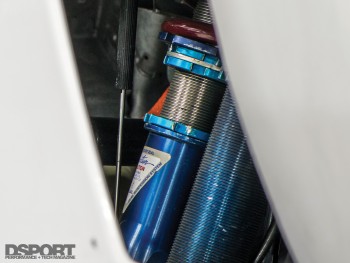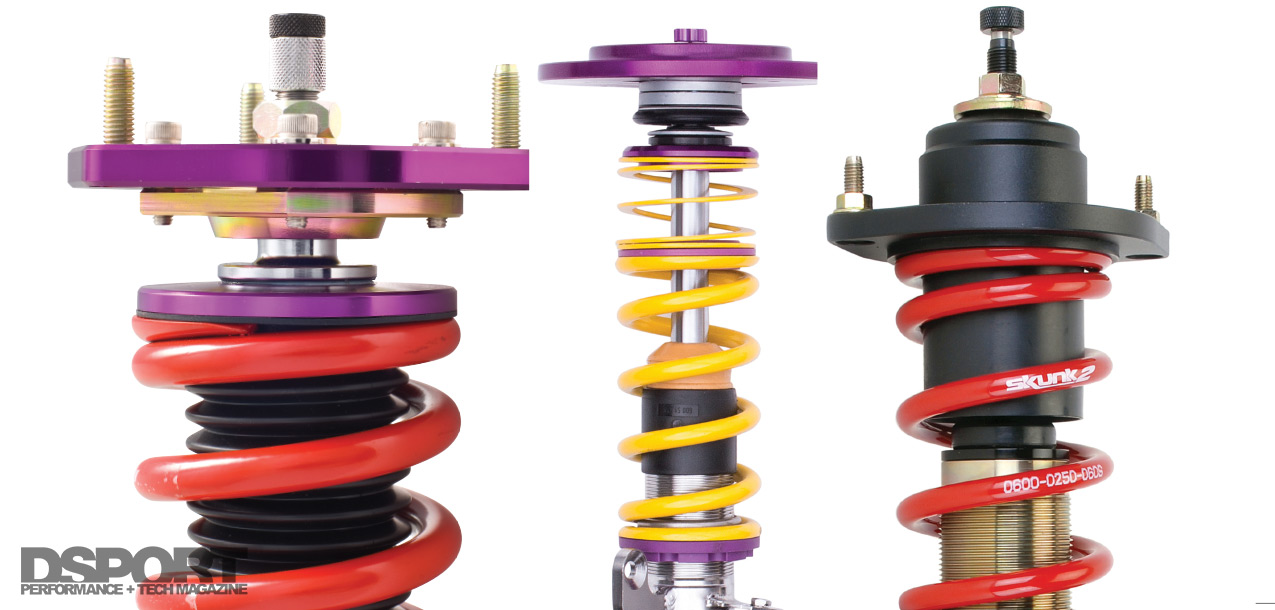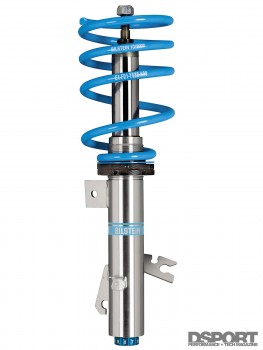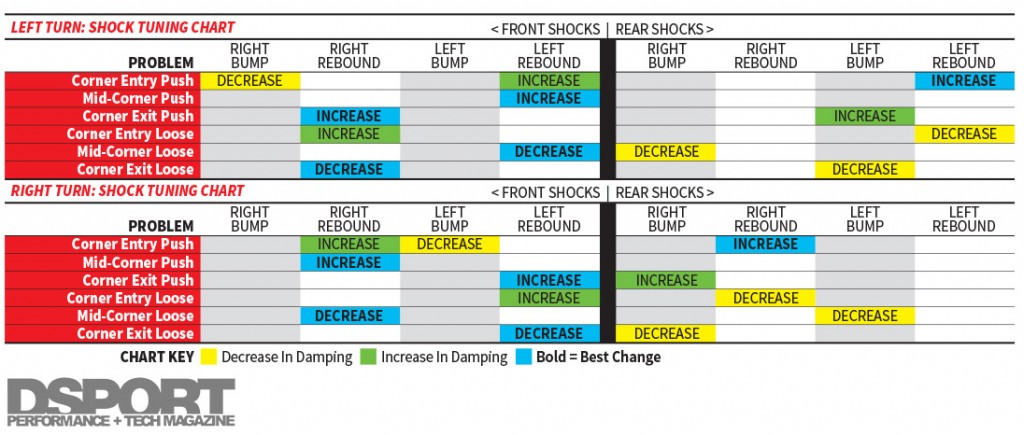Charged Response
Almost all dampeners today, stock or not, are charged with nitrogen gas. The primary function of this charge is to prevent the formation of foam in the oil of the dampener. Some of the high-end racing coilovers that feature an external fluid reservoir may also allow pressure adjustments to the nitrogen charge. Changing this pressure can also affects how the dampener performs and provides further adjustability to the suspension.
 External fluid resevoirs are sometimes mounted to the shock body or may require mounting to the chassis depending on application.
External fluid resevoirs are sometimes mounted to the shock body or may require mounting to the chassis depending on application.
Travel
Having enough suspension travel is almost as important as having good tires. Think about this when you’re fantasizing about how low you want your car to be. Some cars, like the old double- wishbone Civics, have so much travel that you can be in the weeds and still have plenty of travel. Others, like the MAZDASPEED3, can hardly be lowered at all before they start pounding the bump stops.
How much travel you need is determined partly by the terrain you’re driving on and partly by your suspension setup. Having stiffer springs means your suspension will move less, so you don’t need as much travel. The same is true if you have a lot of low-speed damping from your shocks. The next item might not be so obvious: you’ll need more travel and/or a stiffer suspension if you have really sticky tires. The reason is simple; more grip on the road means more body roll, which uses up more travel.
There are ways to maximize the amount of usable suspension travel range that involve adding more parts and making more changes to the entire system to balance out all the other dynamic factors. The simplest travel solution, though, is simply not to lower your car so much.
Low-Speed versus High-Speed
One of the confusing terms you’ll often hear when on the subject of dampers is low-speed versus high-speed. The layman might think that this has something to do with the speed of the vehicle. In actuality, it has nothing to do with the speed of the vehicle. Instead, “low-speed” or “high-speed” describes the speed of the movement of the shock. Low-speed adjustments affect the pitch, roll, heave and warp of the vehicle. Pitch occurs when a vehicle squats on accelerations or dives on braking. Roll happens in a turn as the chassis lifts on the inside of the turn. Heave happens when the entire chassis lifts up or sinks down, as when a vehicle travels over a dip. Warp is the movement that describes the mode when diagonally opposed wheels travel in opposite directions (one in compression while one in rebound). Essentially, low-speed adjustments control how the chassis moves within the wheels. High-speed adjusters tune how external road inputs are handled by the chassis. Ideally, an smooth test track would allow the low-speed settings to be optimized for the chassis and suspension first. These settings would theoretically need little adjustment for different tracks. Adjustments between different tracks would primarily be made on the high-speed adjustments.
COMBINED ADJUSTMENT OR 2-WAY, 3-WAY, 4-WAY INDEPENDENTS
Many 1-way or “adjustable” dampers only adjust compression or rebound or compression and rebound simultaneously. These adjustable dampers may be great on the street, but those serious about running hot laps will end up with a 2-, 3– or 4-way adjustable damper in the coilover system.
A 2-way damper allows for independent low-speed compression and low-speed rebound control. As mentioned before, this will allow tuning of how the chassis moves within the four wheels.
A 3-way damper adds high-speed rebound as a tunable factor. This adjustment affects how quickly the vehicle rises after hitting a bump.
A 4-way damper adds high-speed compression control. This is the setting that can get you into trouble if not properly done. This setting affects the stability of the vehicle during fast changes in driver input.
Buyer’s Bazaar
 The number of features available in coil-over systems is extensive. It is very easy to buy more than what is actually needed. Be sure to identify exactly what range of adjustment the intended use of your vehicle will require. It is also a good idea to consider what services are offered by the manufacturer (i.e. warranty, valving service and product support). The proper coil-over system should deliver the desired ride, handling and control that the user requires.
The number of features available in coil-over systems is extensive. It is very easy to buy more than what is actually needed. Be sure to identify exactly what range of adjustment the intended use of your vehicle will require. It is also a good idea to consider what services are offered by the manufacturer (i.e. warranty, valving service and product support). The proper coil-over system should deliver the desired ride, handling and control that the user requires.
–
Read Bolt On Basic: Suspension Next >>>
Suspension – Upgrades to Enhance Handling Performance | Bolt-On Basics
SUSPENSION 101: Everything You Wanted To Know About Vehicle Handling







